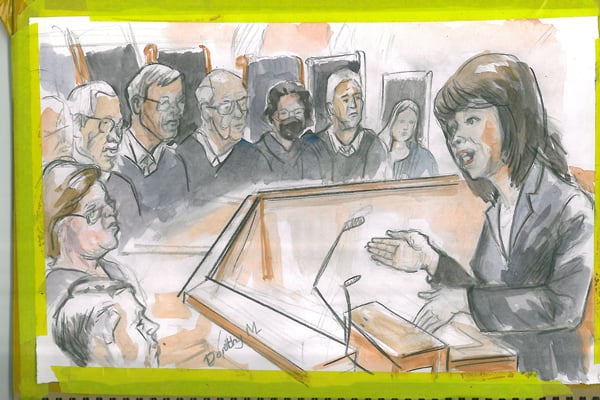Evolution of abortion laws in the USA

What you need to know:
- Henry Wade was the district attorney for Dallas County who defended the anti-abortion law. The Supreme Court case is widely known as Roe v Wade. By a vote of seven to two, the judges ruled that governments (states) lacked the power to prohibit abortions.
On Sunday morning, December 26, 2021, Sarah Weddington, the Texas lawyer who won the landmark court case to make abortions legal across the United States of America, died at her home in Austin aged 76.
The case involved a 25-year-old single woman, Norma McCorvey, under the pseudonym Jane Roe, who challenged the criminal abortion laws in Texas that forbade abortion as unconstitutional except in cases where the mother’s life was in danger.
Ms McCorvey first filed the case in 1969 when she was pregnant with her third child and claimed that she had been raped. But the case was rejected and she was forced to give birth. However, in 1973 her appeal made it to the US Supreme Court where she was represented by Sarah Weddington, then 26 years old, and Linda Coffee, her former classmate who argued the case before the Supreme Court.
Henry Wade was the district attorney for Dallas County who defended the anti-abortion law. The Supreme Court case is widely known as Roe v Wade. By a vote of seven to two, the judges ruled that governments (states) lacked the power to prohibit abortions.
The court’s judgment in 1973 was based on the decision that a woman’s right to terminate her pregnancy came under the freedom of personal choice in family matters as protected by the 14th Amendment of the US Constitution; that the “Due Process Clause” of the Fourteenth Amendment of the Constitution of the USA protects a woman’s right to have an abortion prior to viability. The majority of judges held that women had a privacy interest protecting their right to abortion in the Liberty Clause.
The case created the trimester system that:
Gives American women an absolute right to an abortion in the first three months of pregnancy;
Allows some government (state) regulation in the second trimester of pregnancy;
Declares that states may restrict or ban abortions in the last trimester as the fetus nears the point where it can live outside the womb;
In the final trimester a woman can obtain an abortion despite any legal ban only if doctors certify it is necessary to save her life or health.
There have been mounting challenges to this ruling; anti-abortion activists are urging the court to protect unborn children although experts warn of an increase in maternal mortality if abortion is restricted. The Pennsylvania Abortion Control Act of 1982 was one such law that was crafted to restrict abortions. The law required spousal awareness or parental consent prior to obtaining an abortion. The law also had other restrictions;
A woman seeking an abortion had to give her informed consent prior to the procedure. The doctor had to provide her with specific information at least 24 hours before the procedure was to take place, including information about how the abortion could be detrimental to her health and about the availability of information about the fetus.
A woman seeking abortion had to sign a statement declaring that she had notified her husband prior to undergoing the procedure, unless certain exceptions applied.
Minors had to get the informed consent of at least one parent or guardian prior to the abortion procedure. Alternatively, minors could seek judicial bypass in lieu of consent.
The law defined a medical emergency as that condition, which, on the basis of the physician’s clinical judgment, so complicates the medical condition of a pregnant woman as to necessitate the immediate abortion of her pregnancy to avert death, or for which a delay will create serious risk of substantial and irreversible impairment of a major bodily function.
Certain reporting and record keeping mandates were imposed on facilities providing abortion services
This law was challenged by doctors of five abortion clinics under the name of “The Planned Parenthood”. Their main argument was that these provisions were unconstitutional and therefore sought the court’s intervention to declare them so and stop them from being enforced.
The case sought to overturn the ruling that a woman’s right to an abortion was embedded in the constitution. The District Court, after a three-day bench trial, held that all the provisions of the law that were being challenged were unconstitutional and entered a permanent injunction against Pennsylvania’s enforcement of them.
This decision was, however, appealed by the State of Pennsylvania. The appellate court concurred with the lower court except for the husband notification requirement.
The court ruled that the husband notification was unduly burdensome because it potentially exposed married women to spousal abuse, violence, and economic duress at the hands of their husbands.
And the case made its way to the Supreme Court where the United States joined the case as amicus curiae. The Solicitor General defended the Pennsylvania Abortion Control Act and urged the Supreme Court to overturn its ruling of 1973 as having been wrongly decided.




